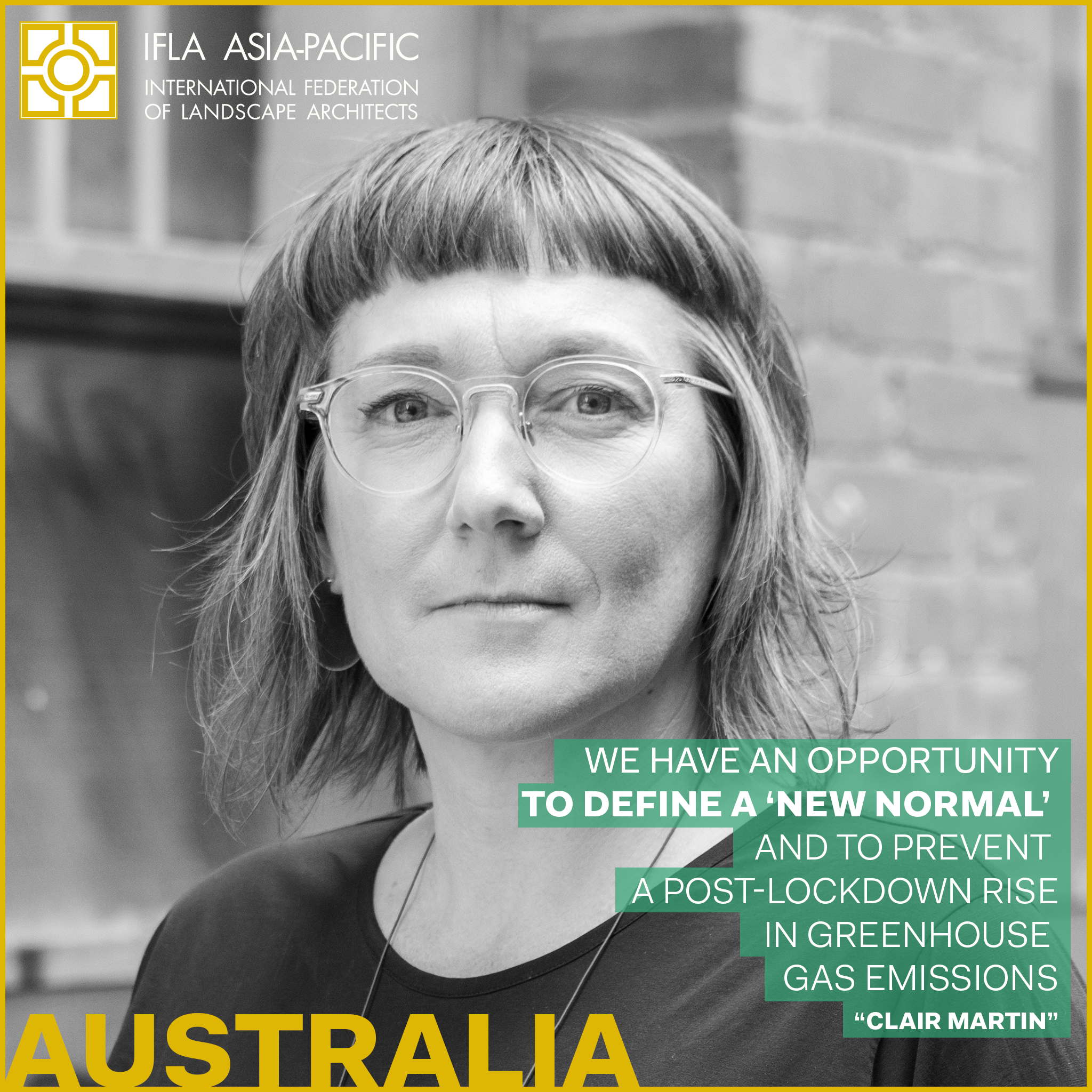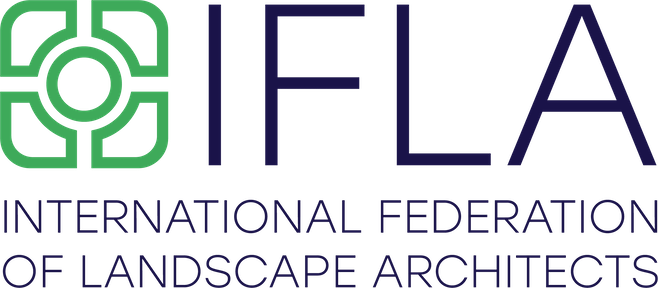LAWB's A Conversation With: AILA's Claire Martin
Australia | Claire Martin
Australian Institute of Landscape Architects

“We have an opportunity to define a new normal.”
Demand that our countries’ COVID-19 fiscal stimulus packages carefully consider the long-term impact on the ecosystems we are part of; creating resilience to external future shocks like COVID-19, natural disasters, and climate change by decarbonising our economies to avoid imposing significant stranded asset costs on future generations.
How would you describe the COVID-19 pandemic situation in your country? What hopes and fears do you currently have?
There have been 104 deaths and an estimated 1.5 million Australians have lost their jobs. Restrictions are easing but I fear more people will die and many more will lose their jobs. My hope is that a vaccine will be developed soon, that’s affordable and available to all nations.
What are some of the hardest-hitting impacts of COVID-19 for the community of design professionals in your country?
We have surveyed our members twice during this period, and they have raised several challenges including remote working issues, impact on careers, networking and maintaining relationships, productivity and the morale of staff, and the cancellation or delay of current projects. Cash flow, new project commencement, and job security are the key challenges anticipated in the next 3 - 6 months. AILA has also joined with allied associations to emphasize to the government the importance of providing a funding stimulus for the design, development, and construction sectors, and to use that investment to create positive long-term legacies for Australia’s communities.
Who is the most vulnerable population in your country affected by this aftermath? And what can we as landscape architects do to provide help?
Several groups may face compounding disadvantage in Australia, including low-income workers, people with low job security, or those who are experiencing poverty or housing instability, people with chronic health conditions, mental illness or a disability, some culturally and linguistically diverse communities, Aboriginal and Torres Strait Islander people, and children, women, and girls. We need to continue to lobby for investment in woman’s refuges, affordable and social housing, and more equitable distribution of blue/green infrastructure to support mental health and wellbeing, and access to employment through inclusive and walkable neighborhoods, and active transport options.
How do you reimagine our profession and new role after the pandemic?
We need to elevate the ambition of our profession to help inform new ways of living and working. While the virus remains a threat, we have an opportunity to define a ‘new normal’ and to prevent a post-lockdown rise in greenhouse gas emissions that will further accelerate the climate and biodiversity emergency. We need to challenge our business as usual approaches by committing to and advocating for, climate-positive design through the integration of materials, processes, and spatial planning that contributes to the reduction of carbon emissions enhances carbon sequestration and protects and enhances biodiversity.
In what ways would you improve your city to enhance the way of life for people in your country post-pandemic?
Australia is one of the world’s most urbanized nations, and Melbourne is Australia’s fastest-growing city, is Australia’s fastest-growing state. In recent years Melbourne has seen a reduction in liveability: population growth is challenging infrastructure, housing affordability has diminished, pollution is increasing, and air quality is declining. There are three specific steps we can take to affect long term positive change:
Planning: Drive mandated, discretionary, and incentivized planning changes to improve the quality of Melbourne’s new places and the retrofitting of existing places. Invest in poly-centric planning supported by multi-modal and active transport. Shorten the distance between work and home, provide medium density development and social and affordable housing, that is well serviced by public transport.
Human Health: Reduce the growing prevalence of non-communicable diseases like obesity, diabetes, and respiratory diseases, anxiety and depression, and nature deficit disorder. Increase the time children spend outside and build community cohesion by making our cities more walkable and more cyclable, by creating 20-minute neighborhoods, extending pedestrian and cycle networks, lowering speeds on streets, and widening footpaths. Increase access to nature by ensuring that public space is equitably distributed and is of high quality, safe, and accessible.
Non-human Health: 30 percent of Australia’s threatened species live in cities. We need to design for species richness - strengthen the urban forest and understorey, support habitat by reducing light, air, and noise pollution, plant climate-adapted species, mandate integrated water management, create ecological corridors, integrate more green roofs and walls, and let nature back in by banning glyphosates.
This crisis reinforces the importance of standing together to fight for universal health. The Landscape Without Borders community could share government advocacy initiatives and project case studies, and also share resources to help stop the spread of harmful, misleading information. Given that our best defence against the pandemic is to stay at home, we could create a membership campaign to help slow down the spread of the virus or raise funds for the COVID-19 Solidarity Response Fund for the World Health Organisation.
*Please join us in shaping our post-pandemic world and landscape architecture profession, by sharing your thoughts and idea aspirations for the new world you envision. We will be collecting everyone's ideas and sharing them with our Landscape Without Borders Community. It is time, we look forward to hearing from you. https://forms.gle/PEP8nFia17WBAkvK7
Produced by: IFLA APR Landscape without Border, Kotchakorn Voraakhom, TALA and IFLA Secretary team
Text editor: Assoc. Prof. Mike Barthelmeh NZILA
Graphic: IFLA APR Landscape without Border, Watcharapon Nimwatanagul, TALA
Communication: Bosco, So Ho Lung, HKILA

